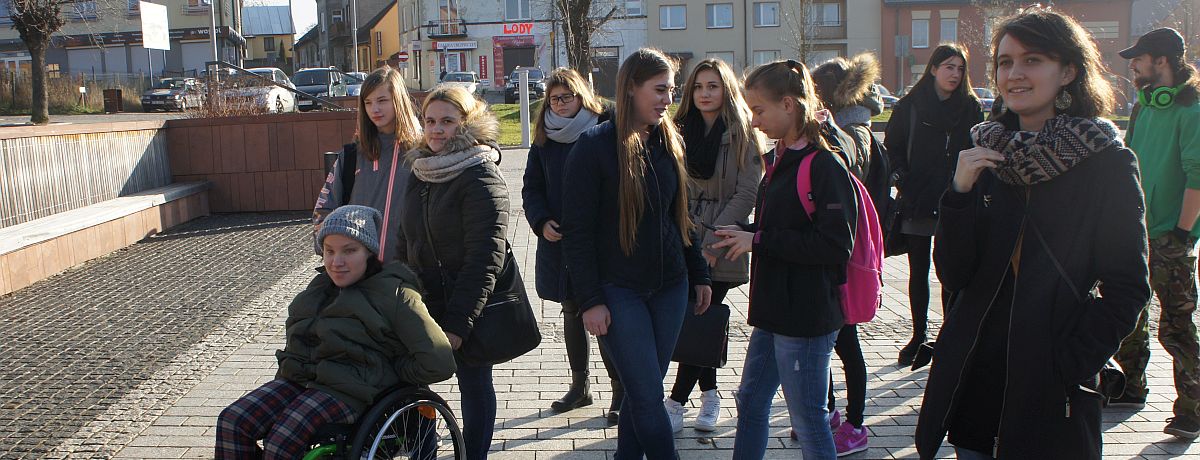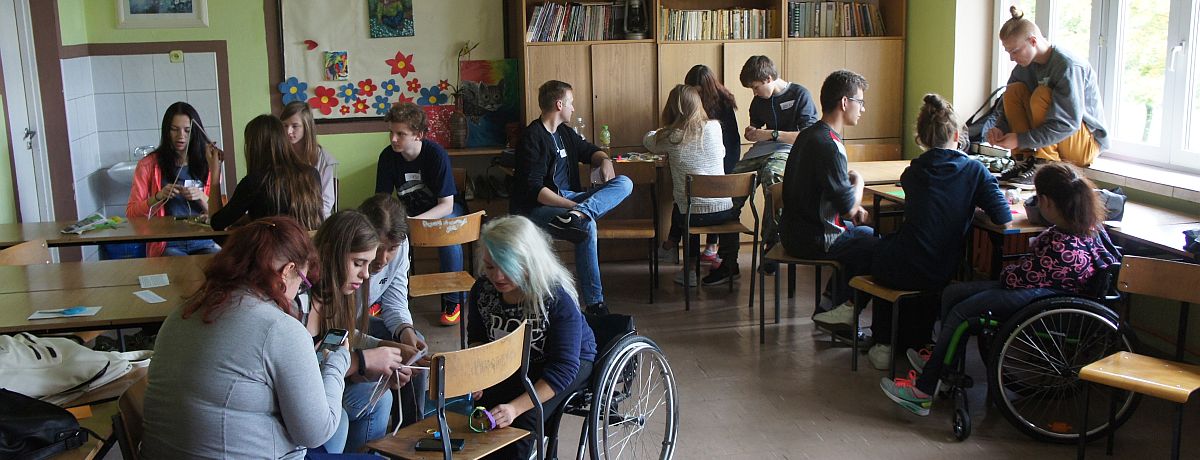| 2016 |
Starachowice
Krzysztof Kamil Baczyński High School No 3 with Integrated Classes


| 2016 |
“I was unaware of the existence of Wierzbnik, or that there were so many Jews in Starachowice. These workshops helped me to understand the culture, tradition and customs. Thanks to this I know that there were Jews in my area”, a participant of the workshops said.
Starachowice is a town of 50,000 inhabitants, located in the Świętokrzyskie Province. A town Wierzbnik existed nearby from the 18th century. Today, it is included as a part of Starachowice as the Old Town. The first Jews settled in Wierzbnik in the 19th century. In the interwar period, they constituted 35% of the town’s population. They mainly dealt with medicine, manufactured lemonade or operated cinematograph. During WWII, the Starachowice Plant company was transformed into a German weapons company. Three forced labor camps were also created. Between 1941 and 1942, a ghetto was set up in the town. Most of Jews were transported from it to the death camp in Treblinka. Around 40 Jews came back to the town after the war, eleven of them were killed by the residents of Starachowice.
After this incident, most of the Survivors left to Canada. There are very few traces of the Jewish community preserved today.
Thanks to the workshops led by the Forum for Dialogue educators, high school students from Starachowice discovered the history of their town unknown to them before. The continuity of the Jewish life and its diversity was particularly important for the students. “I think it is important to make the youth aware about the situation of Jews before, during and after the WWII”, a workshops participant said. In search for additional information, the students went to the Community House of Starachowice where they visited Hall of Memory of Wierzbnik and Starachowice. They also talked with Maciej Frankiewicz who created the exhibition. The students willingly shared their newly acquired knowledge with friends from school. They organized a display of exhibits rented from the Hall of Memory. They also presented a lecture about the Jews of Starachowice and prepared a knowledge test for their audience.

The final walking tour was held on December 14. The high schoolers invited students from junior high to a walking tour following the footsteps of Jews of Wierzbnik. The first stop of the tour was the Jewish cemetery. The guide talked about its history, explained the symbols on matzevot and read a letter from one of descendants. Then, all participants went to the place where sawmill of Heller family operated. During the occupation, a forced labor camp was organized there. The tour participants walked the streets that were part of the ghetto. They stopped by the building where Judenrat was located. The guide talked about the life in the ghetto and its liquidation in 1942. The participants concluded the visit of Wierzbnik Old Town by the plaque commemorating the execution of 4500 members of the Jewish community. Next, they walked to the place where the synagogue used to stand. The Germans destroyed it in 1939.
One of the students talked about Judaism, Jewish holidays, houses of prayer and Chassidim. The participants of the tour also learned where the mikveh was located in Starachowice and what it was used for. Then, they took the same route that during the war Jews walked from the ghetto to the labor camp. The guide showed the prewar photographs depicting the route. The last stop was the labor camp “Majówka”. At the end of the walking tour, there were conclusions, discussions and questions from the tour participants.
After the walking tour, the students boasted about their actions. They wrote an article which appeared in the local press and on the school’s website. Moreover, the high school students wrote a letter to the president of Starachowice asking for commemoration of places connected to the Jewish culture.
During these workshops I learned different, more detailed, more interesting and moving Jewish history. By different, I mean more detailed and interesting than I knew before. I believe that the experience of the workshop will stay with me for long, and preparation of the walking tour will teach us how to collaborate and bring us together.
Workshops participant

School:
Krzysztof Kamil Baczyński High School No 3 with Integrated Classes
Students:
2nd year students
Teachers:
Renata Kasperkiewicz, Joanna Kumon, Ewa Sajór-Ruszczak
Educators:
Franciszek Bojańczyk, Katarzyna Niewczas
In appreciation to the Conference on Jewish Material Claims Against Germany (Claims Conference) for supporting this educational program. Through recovering the assets of the victims of the Holocaust, the Claims Conference enables organizations around the world to provide education about the Shoah and to preserve the memory of those who perished.

In appreciation to Friends of the Forum for supporting the School of Dialogue educational program.
